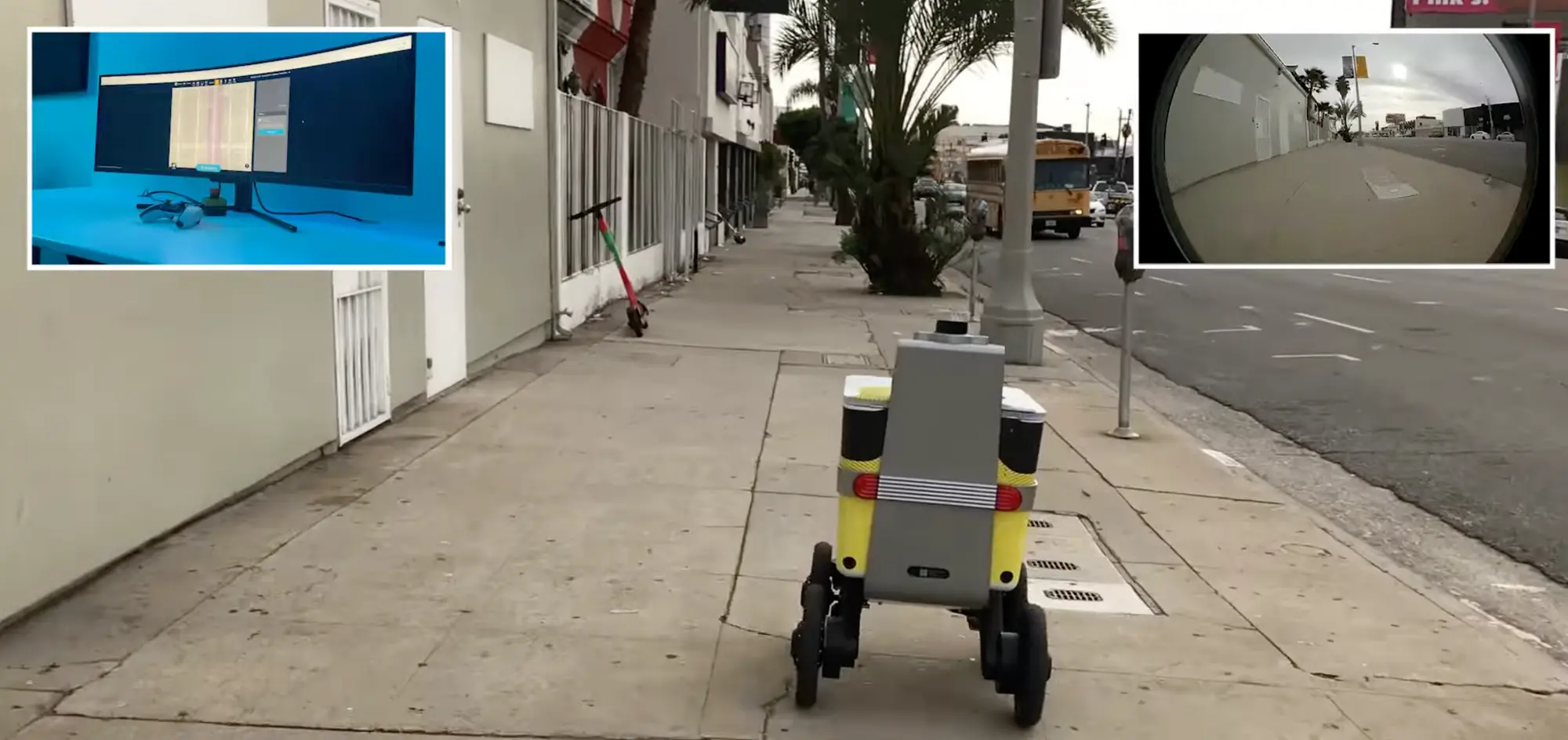

Billy Pilgrim has come unstuck in time.
He has seen his birth and death many times, he says, and pays random visits to all the events in between.
- 5 Posts
- 0 Comments
Joined 2Y ago
Cake day: Aug 22, 2023
You are not logged in. If you use a Fediverse account that is able to follow users, you can follow this user.

 English
English- •
- globalvoices.org
- •
- 2Y
- •
> The massive Chinese social media network Sina Weibo informed its platform’s most popular users last week that they must display their real identities, including names, gender, IP locations, as well as professional and educational background, on their account page starting at the end of October.
>
> The policy will first apply to Weibo users with more than 1 million followers and later extend to those with half a million followers. It is believed that other social media platforms in China will also follow the move.
>
> China implemented the online real-name registration system in 2012. Under the policy, personal data are stored on the platforms and are invisible to other users. Last year, Chinese social media platforms started displaying the IP locations of social media users to crack down on online rumors, including witness accounts of social incidents such as protests.
>
> The latest change was confirmed by Weibo’s CEO Wang Gaofei, who briefly activated the personal information display on his profile page on October 20, 2023. Wang’s social credit status, employment, and professional and educational background were all listed on this profile page.
>
> The new policy triggered a heated debate on Chinese social media. Unexpectedly, online patriots, who are usually fairly united, split into two camps over the new requirements.
>
> Supporters argued that the policy could reduce online rumours and that influencers should bear more social responsibility and reveal their genuine identity to their readers. Among them is state-owned Global Times’ top commentator Hu Xijin, who commented on the new measure on Weibo on October 16:
read more: https://globalvoices.org/2023/10/23/new-policy-requires-chinese-influencers-to-display-their-real-identities-on-weibo/

 English
English- •
- torrentfreak.com
- •
- 2Y
- •
> *Russia's incremental moves to eliminate online privacy regularly target VPNs. To 'free' itself from Google and Apple, in 2022 Russia launched its very own app store, which ironically offers dozens of VPNs. After the government recently announced the mandatory pre-installation of RuStore on tech gadgets, a draft law will outlaw censorship-circumventing VPNs on RuStore. *
>
> Russia has been tightening the noose on VPN services for years. Many non-compliant foreign companies exited Russia when faced with a choice; compromise your customers’ privacy, or else.
>
> Any that remained were required to submit to state regulation, cooperate fully with the authorities, while ensuring that a massive list of domains and URLs censored by the state could not be accessed.
>
> How that has played out on the ground in practical terms isn’t clear, but everything now points to a worsening situation that will almost certainly lead to even more censorship.
>
> # Google Play and Apple’s App Store ‘Replaced’ By RuStore
>
> As Russia’s three-day ‘special military operation’ in Ukraine enters its 588th day, everything is going in accordance with the Kremlin’s plan. Indeed, even small inconveniences linked to sanctions and other minor irritants are being transformed into new opportunities for the Russian people.
>
> Limited access to Google Play and Apple’s App Store, for example, prompted the launch of an all-new, independent Russian app store in May 2022.
>
> As the image above shows, ‘guaranteed secure access to applications’ is delivered under the watchful eye of the Ministry of Digital Development. So whether people are influencing on Rossgram, meeting like-minded people on Topface, or doing their thing on InTokRUS, government support shouldn’t be too far behind.
read more: https://torrentfreak.com/russia-prepares-rustore-vpn-ban-after-declaring-rustore-installation-mandatory-231004/
archive: https://archive.ph/tEBfx

 English
English- •
- www.vice.com
- •
- 2Y
- •
> The flagship Acela fleet may have to cut service because Amtrak is running out of spare parts and using unsupported software on critical components while the new fleet is nowhere close to entering service.
---
> A scathing new report paints a bleak picture of Amtrak’s highly profitable Acela route: trains are running out of spare parts, the new fleet is years delayed and not even close to entering service, and the current fleet is being maintained by harvesting the corpses of old trains and running unsupported software on old circuit boards made by companies that no longer exist.
>
> The report, released this week by the Amtrak Office of Inspector General, indicates that Amtrak may have to run less service on the Acela route from Washington D.C. to Boston via New York.. It calls into question the agency's ability to buy new trains while keeping to a schedule, even as it is in the midst of its most expensive train orders in history to replace a huge swath of the existing fleet thanks to an injection of funds from the 2021 Bipartisan Infrastructure Act.
>
> In 2016, Amtrak bought 28 new train sets from Alstom to replace the current Acela fleet, which is now 25 years old. The train order, which cost $2.5 billion in total (including upgraded rail yards and maintenance facilities) and have a larger capacity than the current fleet and can go 10 mph faster, were supposed to enter service starting in 2021. That never happened.
>
> According to the Amtrak OIG report, Alsom has made 12 of the train sets as well as 22 of the 28 café cars, but they all have defects, including windows that shatter “spontaneously.” But the report notes it is common for new train sets to have defects.
>
> Alstom spokesperson Clifford Cole said in a statement, “We are surprised with the so-called ‘defects’ that the OIG report identifies” and added that the “modifications” Amtrak has requested “are in no way in the critical path of completion of this project.”
>
> The bigger problem that is causing the years of delay has to do with the way new trains are tested before entering service. The new Acela fleet uses a tilt-technology familiar to anyone who has ridden high-speed rail in Europe or Asia that allows the trains to round bends at more extreme angles. Because this is the first fleet to use that technology in the U.S., the Federal Railroad Administration has stringent testing requirements to ensure it is safe. This includes the use of advanced computer modeling before running the trains on the tracks.
>
> According to the Amtrak OIG report, the computer model is the source of the hold-up. Alstom built most of the trains before the model was ready and the FRA still has not approved it. The most recent model submitted to the FRA in July, the 14th attempt, was in some ways worse than previous models, according to the report. Until the FRA validates the model, the trains cannot move forward with real-world testing, much less be put into service.
>
> The report is critical of Amtrak and Alstom for allowing the trains to be built before the model was complete, as well as for not allowing Department of Transportation officials to view the model’s source code to help Alstom get it into shape. Alstom has declined to do so citing trade secrets, according to the report.
>
> Cole, the Alstom spokesperson, said the company is “the world leader in high-speed trains” with 2,300 such trains in service with Alstom parts and technology. Cole said the company is working closely with Amtrak to get them into service. Cole disputed that it is unusual to build trains before the validation of the testing model.
>
> The Amtrak OIG paints a dim picture of Acela service in the coming years. Amtrak’s latest announcement said the new trains would enter service in 2024, but the report implies that is unlikely (the subtitle of the report includes the phrase “Additional Delays and Cost Increases are Likely”). In an addendum to the report, Amtrak management said it agreed with the report’s findings and recommendations.
>
> Moreover, the current Acela fleet is being maintained with spare parts harvested from old trains. Some of the companies that made parts that go into the current fleet no longer exist. The software used to run the train control system on the current Acela fleet is from the mid-1990s and the circuit board that runs the software was made by a company that no longer exists. Delays and trip unreliability are likely to increase as these fleets are duct-taped together while the new, untested fleet sits in the Philadelphia station rail yard.
link: https://www.vice.com/en/article/k7zpgv/a-computer-model-is-causing-years-of-delays-for-amtraks-new-high-speed-trains-scathing-audit-finds

 English
English- •
- www.404media.co
- •
- 2Y
- •
> Serve Robotics, which delivers food for Uber Eats, provided footage filmed by at least one of its robots to the LAPD as evidence in a criminal case. The emails show the robots, which are a constant sight in the city, can be used for surveillance.
---
> A food delivery robot company that delivers for Uber Eats in Los Angeles provided video filmed by one of its robots to the Los Angeles Police Department as part of a criminal investigation, 404 Media has learned. The incident highlights the fact that delivery robots that are being deployed to sidewalks all around the country are essentially always filming, and that their footage can and has been used as evidence in criminal trials. Emails obtained by 404 Media also show that the robot food delivery company wanted to work more closely with the LAPD, which jumped at the opportunity.
>
> The specific incident in question was a grand larceny case where two men tried (and failed) to steal a robot owned and operated by Serve Robotics, which ultimately wants to deploy “up to 2,000 robots” to deliver food for UberEats in Los Angeles. The suspects were arrested and convicted.
>
read more: https://www.404media.co/serve-food-delivery-robots-are-feeding-camera-footage-to-the-lapd-internal-emails-show/
archive: https://archive.ph/997sA

 English
English- •
- torrentfreak.com
- •
- 2Y
- •
> *WordPress has published its latest transparency report which shows that it only takes action for a small fraction of the piracy takedown notices it receives. A whopping 86% don't result in any removals. This high rejection rate is mostly the result of "careless" incomplete notices sent by takedown companies, the report notes.*
---
> Automattic, the company behind the popular blogging platform WordPress, receives thousands of takedown requests from copyright holders.
>
> For several years the volume of notices continued to increase, with a peak in 2018, after which the trend slowly went in the other direction.
>
> This week, the company published its latest WordPress.com transparency report, revealing that it processed 2,412 takedown notices during the first six months of the year. That is a significant drop compared to a year earlier when over 3,321 notices were handled.
>
> These data only apply to the number of DMCA notices that are directed at WordPress.com services. Each of these notices can contain multiple URLs, in some cases even dozens. In future, Automattic plans to release more granular data.
Abusive and Incomplete Takedown Requests
>
> Aside from the continued drop in takedown volume, the high rejection rate clearly stands out. Of all notices received, only 14% result in any content removals; the vast majority are rejected for a variety of reasons.
>
> In the reported period, 77% of all notices were rejected because they were incomplete. An additional 9% was labeled as ‘abusive’ and dismissed for that reason. The remaining 14% was processed as usual.
>
> The number of rejections is significantly higher than in the same period last year. According to Automattic, this is mostly due to more incomplete notices, which are often sent by specialized ‘removal companies’.
>
> “Most of these incomplete notices were submitted through seemingly automated processes that are provided by content removal companies which often charge content creators to exercise their rights,” Automattic notes.
>
> These ‘faulty’ notices also include requests to take down content that’s cached for other hosting providers, through WordPress’ Jetpack service, for example. Since WordPress is not the original host it doesn’t take action in response to these.
>
> The high percentage of ‘faulty’ notices is a source of frustration for Automattic, which indirectly criticizes the companies that largely rely on takedown bots and automated processes.
>
> # Tumblr
>
> Automattic also owns the blogging platform Tumblr, which it purchased in 2019. For this service, it releases a separate transparency report.
>
> The Tumblr report shows a similar decline in DMCA takedown notices. In the first half of 2023, 2,278 takedown notices were sent to the platform, a significant drop from the 3,362 requests it received a year earlier.
>
> A detailed breakdown shows that these DMCA notices targeted 2,369 posts and 11,146 pieces of other content. The majority of these notices, 78%, were valid and processed accordingly.
>
> “This type of careless use of the DMCA makes it harder for platforms to efficiently process valid takedown notifications. In the past, we have highlighted similar problematic trends such as the negative impact of automated takedown notices submitted by bots,” the company writes.
>
> All in all, the transparency reports show that the major DMCA takedown surge of a few years ago has subsided. However, Automattic stresses that it’s important to remain vigilant to ensure that content isn’t needlessly removed.
>
> “For our part, we meticulously review each takedown notice we receive so that we can identify the validity, push back on abuse, and help our users understand their rights such as Fair Use,” Automattic writes.
---


